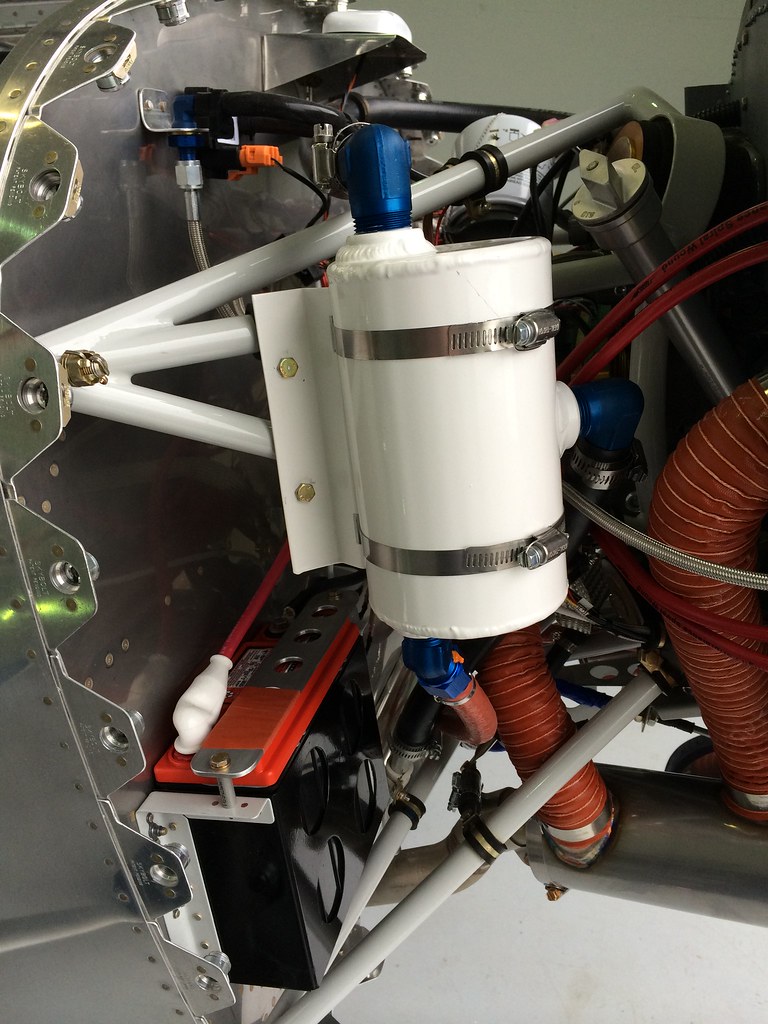OK, no flame intended here at all?just more discussion
Honestly, in one sense, ice blocking a non-whistle-slotted breather, or an improperly installed nose seal, as causes of seal blowouts, while certainly possibilities, are a bit like distractors to the coked-up CVV stem discussion?yet they both add value to the discussion. That may sound like playing to both sides of the aisle, but its not?
Sure, they could each cause a blowout, but I've not heard anything from Gash to indicate he suspected the latter, and the former is a non-player in his system set-up.
Talking about the ice build-up is a good reminder to those with standard breather tubes?something to check as we head into winter (cleanliness, mounting, whistle-slot integrity.
Crank-seal installation?Gash, I have some gouge for ya, if you do this yourself.
But the CVV stem coking needs to remain the focus, so folks can be eyes-open on the issue. I say this, and I do still have mine installed?with open eyes.
My discussion here is about my experience, and may or may not be related to Gash's experience. I had what sounds like a similar level of blockage in a much shorter time...about 4 months and 70 hours (slower winter months). My engine is a 540, though not in a 10. My CVV was also broken inside. I did not have a seal blow out, and initially wondered if Gash's being coked up, down to a 1/8" hole, could cause a seal blowout. Not questioning his diagnosis, I say this as a rhetorical question of "what size hole causes a seal to blow?" There's probably a lot of "it depends" in there, and seal installation quality likely is a "depends" factor. Another interesting finding has been that since that time, I've inspected at oil changes and during other cowl-off maintenance, and have not seen anywhere near that speed or severity of coking. Very minor build-ups near the weld on my DIY saddle. Not sure why, and I don't know if coking starts slow, then accelerates as the clog gets large, but I have seen only very insignificant deposits since that first major clog. Since my clog occurred in winter, I will be watching closely this winter as well, to see if it gets worse again?just for a data point. No idea if cold weather has any significance at all though?just data seeking.
In my case I did chase leaks, and changed the nose seal twice?once before the AOS/CVV was installed, and once after. The seal leak was worse on the first swap, in which I replaced a split seal with a split seal. I felt I was diligent in the first installation (my knuckles bore the brunt of my diligent cleaning of the crank bore!). It held for a while, but began to leak again, though not as badly. During that time, I did install the AOS and CVV. My impression was that my oil leaks did seem to increase slightly after the install, but can't say how long after?very non-scientific swag.
Did the nose seal start to leak again due to the coking, I dunno?certainly possible. I do know that I got some additional advice from Lycon on the second seal swap; used a one piece seal, did a better job of sanding a helical pattern in the bore, and used Lycon's recommended Scotch Weld 1300 glue, versus Ace-bought Pliobond, on the second go-round (and my knuckles were even worse off). So I can't point to the CVV as the only culprit, and I don't think my head is in the sand. I also changed two prop governor gaskets, one oil return line, and chased and chased this, both before and after the CVV was installed. Even found a cracked (and poorly repaired) old oil breather adapter fitting.
After I found the coked stem, I went to a regular inspection interval, as described above. Still had some pesky oil leaks though, and replaced an oil cooler line, then the oil cooler, which had developed an internal leak (with a consistently clean CVV stem).
The last 10 hours have shown the cleanest cowl innards I've had for a while, but that is a very short sample size. Still watching closely, keeping the valve/stem clean, and have the 2 NAPA valves installed. I would like to test for the vent vacuum amount being provided, and will do so to add to this discussion. The clean belly concept has never been a big factor for me in this, though cleaning only smoke oil residue off the tail would be kinda nice! And if there is no vacuum, I'll work with Allan to see why, and see if it can be improved. I'll provide him candid feedback, good or "other", and post here too.
Cheers,
Bob





